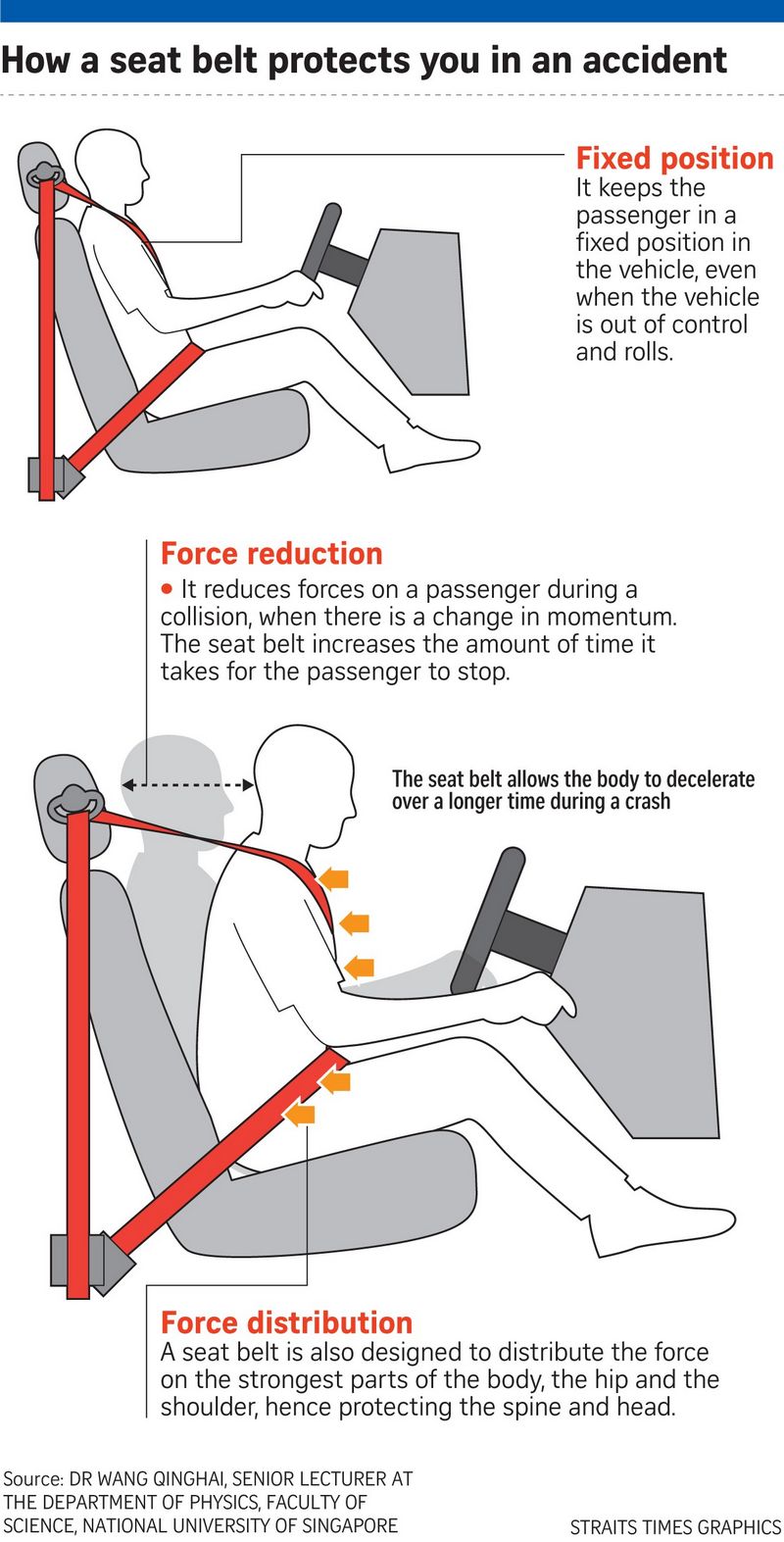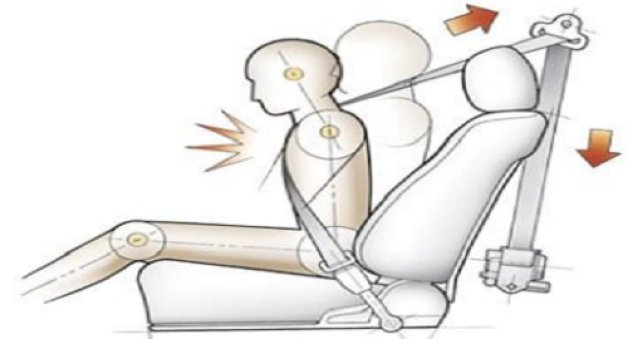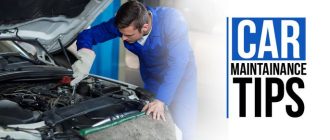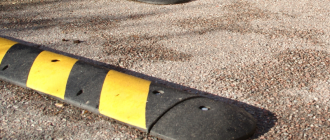
How Do Seat Belts Work and What Happens if They Break
Seat belts play a crucial role in keeping drivers and passengers safe on the road. They are designed to provide protection in the event of a collision or sudden stop, preventing occupants from being thrown forward or ejected from the vehicle. But how do seat belts actually work? And what can you do if something goes wrong?
Seat belts work by applying forces to the body in the event of a crash, spreading the forces over a greater area and reducing the risk of serious injury. When a vehicle comes to a sudden stop, the seat belt locks to prevent excessive movement. This keeps the occupant in their seat and prevents them from hitting the dashboard, windshield, or other objects inside the vehicle. The webbing of the seat belt is designed to stretch slightly to absorb some of the energy from the crash, further reducing the impact on the body.
If something happens and your seat belt fails to function properly, it’s important to know what to do. First, stay calm and try to remain in control of the vehicle. If possible, try to slow down gradually and pull over to a safe location. Remember to prioritize your safety and the safety of others on the road. Once you have safely stopped the vehicle, assess the situation and check for any visible damage to the seat belt system.
If you find that the seat belt is broken or not functioning correctly, it is recommended to have it repaired or replaced as soon as possible. Seat belts are a critical safety feature and should not be overlooked. In the meantime, it’s important to take extra precautions when driving without a functioning seat belt. Avoid sudden stops or maneuvers that could increase the risk of injury. And remember, always buckle up and make sure everyone in the vehicle is properly restrained.
Importance of Wearing Seat Belts
Seat belts are an essential safety feature in vehicles. They are designed to protect passengers in the event of a collision or sudden stop. Understanding how seat belts work and what to do if they fail is crucial for everyone’s safety.
So, how do seat belts work? Seat belts are made of a strong webbing material that is attached to the vehicle frame at one end and has a buckle at the other end. When you fasten your seat belt, the webbing is pulled tight across your chest and lap, securing you in place. In the event of a crash or sudden deceleration, the seat belt helps to distribute the force of the impact over a wider area of your body, reducing the risk of injury.
Now, what happens if seat belts fail? Seat belts are designed to withstand significant force, but sometimes they may fail due to manufacturing defects or other factors. If your seat belt fails, it is essential to know what to do. Firstly, remain calm and try to maintain control of the vehicle. Secondly, if possible, shift your body into a position that may offer partial protection, such as bracing yourself against the seat or holding onto the steering wheel. Lastly, if you have time, try to find something sturdy to hold onto, such as the dashboard or door frame, to minimize the impact. It is crucial to remember that these actions may not guarantee safety, but they can help reduce the risk of severe injury.
Considering the potential risks, why is it important to wear seat belts? Wearing a seat belt is the simplest and most effective way to protect yourself and others in a vehicle. According to the National Highway Traffic Safety Administration (NHTSA), seat belts save thousands of lives every year. They can significantly reduce the risk of serious injuries, such as head injuries, spinal cord injuries, and fractures, in the event of a crash. Additionally, wearing seat belts also helps to prevent ejection from the vehicle, which is a leading cause of fatal injuries.
| 1. | Reduces the risk of severe injuries |
| 2. | Prevents ejection from the vehicle |
| 3. | Saves lives |
It is important for both drivers and passengers to wear seat belts at all times, regardless of the distance of the trip. Seat belts should be worn correctly, with the lap belt low across the hips and the shoulder belt across the chest. Children should always be properly secured in age-appropriate car seats or booster seats.
In conclusion, wearing seat belts is of utmost importance for everyone’s safety. They work to protect passengers in the event of a crash and significantly reduce the risk of severe injuries. Understanding how seat belts work and what to do if they fail can provide valuable knowledge that may save lives.
Understanding Seat Belt Anatomy
Seat belts are an essential safety feature in cars that protect passengers in the event of a crash. They work by restraining the movement of the occupant, preventing them from being thrown forward or out of the vehicle. It’s important to understand how seat belts are designed and how they function to ensure their proper use and effectiveness.
What happens if seat belts fail?
In rare cases, seat belts can fail to provide the intended protection. This can happen due to various reasons, such as manufacturing defects, improper installation, or wear and tear. If a seat belt fails, the consequences can be severe, as the occupant may be thrown around inside the vehicle or ejected from it in a collision.
What are seat belts made of?
Seat belts are made of strong and durable materials that can withstand high forces. The most common materials used in seat belt construction are nylon and polyester. These materials have high tensile strength and can effectively restrain the occupant during a collision.
How do seat belts work?
Seat belts work on a simple principle of physics known as inertia. When a vehicle suddenly decelerates or comes to a stop, the occupants continue to move forward due to their own inertia. Seat belts are designed to apply an opposing force on the occupant, limiting their forward movement and keeping them in place.
There are two main components of a seat belt system: the lap belt and the shoulder belt. The lap belt goes across the lower hips, while the shoulder belt goes across the chest and over the shoulder. When the seat belt is properly fastened, these two components work together to distribute the forces of a crash across the strongest parts of the body – the hips and the chest.
Types of seat belt mechanisms
There are several types of seat belt mechanisms, including:
- Three-point seat belt: This is the most common type of seat belt found in cars. It consists of a lap belt and a shoulder belt that are connected, forming a single belt.
- Two-point seat belt: This type of seat belt only has a lap belt and lacks the shoulder belt. It is commonly used in older cars.
- Multi-point seat belt: Multi-point seat belts have additional attachment points, such as a third belt that goes across the occupant’s lap or shoulder. These belts provide extra security and are often used in racing or high-performance vehicles.
It is important to wear seat belts properly and ensure that they are in good working condition. Regular inspection and maintenance of seat belts can help identify any issues or damage that may compromise their effectiveness. Remember, seat belts save lives and should always be worn when traveling in a vehicle.
Seat Belt Types and Their Uses
Seat belts are a crucial safety feature in vehicles that work to protect passengers in the event of a collision. There are different types of seat belts, each designed to provide a specific level of protection.
1. Lap belts: These are the simplest and most basic type of seat belts. They consist of a strap that goes across the passenger’s lap. Lap belts are typically used in older vehicles or in the middle seat of the back row. While they offer some protection, they are not as effective as other types of belts in preventing injuries.
2. Three-point belts: These are the most common type of seat belts found in modern vehicles. They consist of a strap that goes across the passenger’s lap and another strap that goes diagonally across the chest. Three-point belts are effective in distributing the force of impact across the strongest parts of the body, reducing the risk of injury in a collision.
3. Five-point harnesses: These are typically used in child safety seats and high-performance vehicles. They consist of a lap belt, a chest strap, and shoulder straps that go over both shoulders. Five-point harnesses provide the highest level of protection by securing the passenger at five different points, minimizing the risk of ejection and reducing the impact force on the body.
In the event of a seat belt failure, it is important to know what to do. If a seat belt fails, passengers should immediately notify the vehicle manufacturer and seek professional repair. It is also crucial to wear a seat belt properly to maximize its effectiveness in case of an accident.
Remember, seat belts are designed to protect you and prevent serious injuries. Understanding the different types of seat belts and their uses will help ensure your safety and the safety of others on the road.
How Seat Belts Work in a Car Accident
Seat belts are an essential safety feature in cars that help protect passengers in the event of a car accident. They work by restraining the occupant of a vehicle and preventing them from being thrown forward or hitting the interior surfaces of the car.
When a car accident happens, the forces involved can be extremely powerful and can cause serious injury or even death. Seat belts are designed to help mitigate these forces and reduce the risk of injury. They do this by distributing the forces of the crash over a wider area of the body, such as the chest and pelvis, which are better able to withstand the impact.

If a car comes to a sudden stop or is involved in a collision, the seat belt will lock and hold the occupant in place. This prevents them from being thrown forward, which can cause severe head and neck injuries. Additionally, the seat belt acts as a cushion, absorbing some of the impact and reducing the risk of injury.
Seat belts also help to keep occupants in the proper position relative to the airbags in the car. In the event of an accident, airbags deploy rapidly to provide an additional layer of protection. However, if the occupant is not properly restrained by their seat belt, the airbags may not be able to provide effective protection, increasing the risk of injury.
What happens if a seat belt fails during a car accident? While seat belts are designed to be highly reliable, there are rare instances where they may malfunction or fail to properly restrain an occupant. In such cases, the occupant may experience greater injuries than they would have if the seat belt had worked properly. It’s important to regularly inspect seat belts for any signs of wear or damage, and replace them if necessary.
In conclusion, seat belts are crucial safety devices that play a vital role in protecting occupants during car accidents. They work by restraining the occupant and distributing the forces of a crash across the body, reducing the risk of injury. It is important to always wear seat belts properly and ensure they are in good working condition to maximize their effectiveness in protecting against injuries.
Common Causes of Seat Belt Failure
Seat belts are designed to protect passengers in the event of a collision or sudden stop. They work by restraining occupants and preventing them from being thrown forward, which can cause serious injuries or even death. However, seat belts can sometimes fail to provide the intended protection due to various factors. It is important to understand these common causes of seat belt failure to ensure your safety on the road.
- Defective Seat Belt Mechanisms: Seat belts may fail due to defects in their mechanisms. This can include issues with the pretensioner, retractor, latch or buckles. When any of these components malfunction, the seat belt may not properly restrain the occupant in the event of a crash.
- Worn or Damaged Seat Belts: Over time, seat belts can become worn or damaged. This can occur due to constant use, exposure to harsh conditions, or improper maintenance. When seat belts are worn or damaged, they may not provide the necessary level of restraint.
- Inadequate Seat Belt Design: Some seat belts may have design flaws that can compromise their effectiveness. This can include weak materials, poorly positioned anchor points, or inadequate locking mechanisms. In such cases, seat belts may fail to properly restrain occupants during a collision.
- Incorrect Seat Belt Usage: Seat belts can only provide optimal protection when they are used correctly. Failure to wear the seat belt properly, such as not wearing it snugly or positioning it over delicate areas of the body, can reduce its effectiveness and increase the risk of injury.
- Damage from Previous Collisions: Seat belts that have been previously involved in a collision may have suffered damage that compromises their functionality. This can include stretched or frayed webbing, bent or broken hardware, or damaged seat belt pretensioners. It is essential to inspect seat belts after an accident and replace any components that show signs of damage.
Understanding the common causes of seat belt failure is crucial for your safety. By regularly inspecting your seat belts, ensuring proper usage, and addressing any concerns promptly, you can minimize the risk of seat belt failure and increase your chances of surviving a crash.
Signs of Seat Belt Failure
Seat belts are an essential safety feature in vehicles, designed to help protect occupants in the event of a collision or sudden stop. However, just like any other mechanical component, seat belts can experience failure over time. It is important to understand the signs of seat belt failure to ensure your safety on the road.
1. Frayed or Torn Webbing: One of the most obvious signs of seat belt failure is frayed or torn webbing. Inspect the seat belt for any visible signs of damage, such as cuts, tears, or loose threads. If you notice any of these issues, it is important to have the seat belt repaired or replaced immediately.
2. Stuck or Slow-Retracting Belt: A seat belt that is stuck or retracts slowly may indicate a problem with the retractor mechanism. This can prevent the seat belt from properly restraining you in the event of an accident. If you experience difficulty retracting or extending the seat belt, have it inspected by a professional.
3. Loose or Detached Buckle: A loose or detached buckle can be a serious sign of seat belt failure. The buckle should stay securely latched when in use. If you find that the buckle easily comes loose or detaches, it is important to have it replaced to ensure proper functionality.
4. Excessive Slack or Tightness: A properly functioning seat belt should have just enough slack to allow for comfortable movement but should remain snug when worn. If you notice excessive slack or tightness that cannot be adjusted, it may indicate an issue with the belt tensioner or retractor.
5. Unusual Noises or Clicking Sounds: Unusual noises or clicking sounds when using the seat belt can indicate a problem with the mechanism. These sounds may be a sign of worn or damaged components that can compromise the effectiveness of the seat belt. If you hear any unusual noises, it is important to have the seat belt inspected.
Remember, if any of these signs of seat belt failure are present, it is crucial to address the issue promptly. Your safety on the road depends on the proper functioning of your seat belt.
What to Do if Your Seat Belt Fails
If a seat belt failure happens while driving, it is crucial to stay calm and take immediate action. Here are some steps to follow if your seat belt fails:
- Assess the situation: Take a quick evaluation of the surroundings and potential hazards. This will help you determine the urgency of the situation and plan your next actions accordingly.
- Continue to use the seat belt: Even if the seat belt is not working properly, it is still recommended to keep it fastened. The seat belt might still provide some level of protection in case of sudden braking or collision.
- Notify the driver: If you are a passenger, inform the driver immediately about the situation. It is important to make sure they are aware of the seat belt failure to adjust their driving accordingly.
- Find a safe place to stop: If possible, try to find a safe location to pull over and stop the vehicle. This will minimize the risk of accidents and injuries while dealing with the seat belt failure.
- Seek professional help: Once you have safely stopped the vehicle, contact a professional mechanic or a car servicing facility to inspect and repair the seat belt. Do not attempt to fix it yourself, as it requires technical expertise to ensure proper functionality.
- Report the incident: It is important to report the seat belt failure to the relevant authorities and the manufacturer of the vehicle. This will help raise awareness about the issue and potentially contribute to improving seat belt safety in the future.
Remember, seat belts are designed to save lives, and while seat belt failure is rare, it is essential to take appropriate action in case it happens. Staying vigilant and proactive can help minimize the risks and ensure the safety of both the driver and passengers.
Legal Aspects of Seat Belt Failure
Seat belts play a crucial role in ensuring the safety of vehicle occupants. They are designed to restrain occupants during a collision or sudden stop and protect them from being thrown forward or out of the vehicle. However, there are instances when seat belts may fail to do their intended job, which can lead to serious injuries or even fatalities.
Understanding how seat belts work is important in evaluating their failure and potential legal implications. Seat belts typically consist of a webbing material that is fastened around the occupant’s body, usually with a buckle. When a collision or sudden stop occurs, the seat belt’s mechanism locks the webbing, preventing the occupant from being thrown forward.
In the legal context, seat belt failures are often seen as a breach of a vehicle manufacturer’s duty to ensure the safety of their products. If a seat belt fails and results in injuries or deaths, the manufacturer may be held liable for the failure in a product liability lawsuit.
It is important for individuals to know what to do if they experience a seat belt failure. If a seat belt fails to restrain an occupant during a collision, the individual should seek immediate medical attention and document any injuries sustained. They should also preserve the seat belt as evidence and secure the services of an experienced personal injury lawyer who can help them navigate the legal process.
In such cases, it is important to gather evidence that proves the seat belt failure, such as photographs, witness statements, and expert testimonies. This evidence will be crucial in proving the manufacturer’s negligence in designing, manufacturing, or warning about the potential risks of the seat belt.
In conclusion, understanding the legal aspects of seat belt failure is essential for individuals who have experienced such failures. Seat belts are designed to protect vehicle occupants, and when they fail, there may be legal recourse available to hold the manufacturer accountable for their negligence. By understanding how seat belts work and what steps to take if they fail, individuals can protect their rights and seek compensation for any injuries or damages suffered as a result of a seat belt failure.
Seat Belt Safety Tips
Seat belts are an essential safety feature in vehicles, protecting drivers and passengers in the event of a collision or sudden stop. Understanding how seat belts work and what to do if they fail is crucial for everyone on the road. Here are some important seat belt safety tips:
- Always wear your seat belt: It is crucial to buckle up every time you get in a vehicle, whether you are the driver or a passenger. Seat belts save lives and significantly reduce the risk of serious injury.
- Properly adjust your seat belt: The seat belt should fit snugly across your lap and shoulder. The lap belt should rest on your hips, not your stomach, while the shoulder belt should rest across your chest and shoulder, avoiding any contact with your neck.
- Secure children with appropriate restraints: Children should always be properly secured in age-appropriate car seats or booster seats. Follow the manufacturer’s instructions and make sure the seat is correctly installed.
- Inspect your seat belt regularly: Check your seat belt for any signs of wear, fraying, or damage. If you notice any issues, have it inspected and repaired by a professional as soon as possible.
- Never tamper with or modify your seat belt: It is important not to alter or modify your seat belt in any way. This includes removing or disabling any parts or using seat belt extenders without proper approval.
- Know what to do if your seat belt fails: In the unlikely event that your seat belt fails during a collision, try to maintain control of the vehicle and brace yourself against the steering wheel or dashboard. After the collision, seek medical attention and report the seat belt failure to the appropriate authorities.
- Stay vigilant and defensive on the road: While seat belts offer significant protection, it is vital to drive defensively, obey traffic laws, and stay alert at all times. Avoid distractions and maintain a safe following distance from other vehicles.
By following these seat belt safety tips, you can significantly reduce the risk of injury in the event of a collision. Remember, seat belts save lives!
Frequently Asked Questions about Seat Belts
- How do seat belts work?
- What happens if seat belts fail?
- What should I do if my seat belt doesn’t work?
- How often should seat belts be replaced?
- Are seat belts required by law?
- Can seat belts hurt you in an accident?
Seat belts work by restraining the occupant of a vehicle during a sudden stop, preventing them from being thrown around the interior or ejected from the vehicle. They utilize a combination of webbing and retractor mechanisms to secure the person in their seat.
If seat belts fail during an accident, the occupants of the vehicle may not be properly restrained, resulting in potential injuries or ejections from the vehicle. It is important to regularly inspect seat belts for signs of wear or damage and have them repaired or replaced as needed.
If you find that your seat belt is not working properly, it is important to have it inspected and repaired by a professional as soon as possible. In the meantime, do not rely on the faulty seat belt and consider using an alternative restraint system, such as a different seat belt or a child safety seat, if applicable.
Seat belts should be replaced if they show signs of wear, such as frayed or damaged webbing, broken or malfunctioning retractors, or if they fail to properly secure the occupant. It is recommended to have seat belts inspected regularly and replaced as advised by the manufacturer or a trusted automotive professional.
Seat belts are required by law in most countries for both the driver and passengers. They are considered one of the most effective safety devices in vehicles and are designed to save lives and reduce the severity of injuries in the event of a crash.
While it is possible for seat belts to cause minor injuries, such as bruises or cuts, they are designed to significantly reduce the risk of more serious injuries or fatalities. The benefits of wearing seat belts outweigh the potential risks in the majority of cases.
Seat Belt Recommendations
Seat belts are an important safety feature in vehicles, designed to protect occupants in case of accidents. It is vital to understand how seat belts work and what to do if they fail, but it is equally important to use them correctly. Here are some seat belt recommendations:
- Always wear your seat belt: Seat belts only work if you use them. Make it a habit to wear your seat belt whenever you are in a vehicle, whether you are the driver or a passenger.
- Properly secure the seat belt: Pull the seat belt across your body and insert the latch plate into the buckle until you hear a click. Ensure the belt is tight and snug, but not too tight that it digs into your body.
- Adjust the seat belt height: Most vehicles allow you to adjust the height of the shoulder strap. Ensure the shoulder strap is positioned across the center of your shoulder and chest to provide maximum protection.
- Do not place the seat belt under your arm or behind your back: The seat belt should always be worn over your shoulder and across your chest. Placing it under your arm or behind your back significantly reduces its effectiveness.
- Position the lap belt correctly: The lap belt should be positioned low across your hips, not your stomach. This ensures that the force of a collision is distributed across the strongest parts of your body.
- Replace damaged seat belts: If your seat belt is visibly damaged, frayed, or not functioning properly, have it replaced immediately. Seat belts are designed to save lives, but they can only do so if they are in good working condition.
- Children should use appropriate restraints: Follow the guidelines for child passengers and ensure they are using the appropriate car seat or booster seat based on their age, weight, and height. Seat belts should only be used when the child has outgrown the need for a car seat.
By following these seat belt recommendations, you can increase your chances of staying safe in case of an accident. Remember, seat belts can significantly reduce the risk of serious injuries or fatalities, so always buckle up!
FAQ:
How do seat belts work?
Seat belts work by using a combination of physics and engineering. When a car suddenly stops, seat belts keep passengers from flying forward by using the principle of inertia. The belt restrains the body’s movement and prevents it from crashing into the steering wheel, dashboard, or windshield.
What are seat belts made of?
Seat belts are typically made of synthetic materials such as nylon or polyester. These materials are strong, durable, and can withstand high amounts of force during a car accident. The belts are also designed to stretch slightly to absorb some of the impact and reduce the risk of injury.
What should I do if my seat belt fails to lock?
If your seat belt fails to lock, it is important to address the issue as soon as possible. First, check if there are any visible defects or obstructions in the belt mechanism. If there are no obvious issues, have a professional inspect and repair the seat belt system. In the meantime, avoid driving or riding in the vehicle until the problem is resolved.
What is the proper way to wear a seat belt?
The proper way to wear a seat belt is to pull the belt across your body and insert the latch into the buckle until it clicks. The lap portion of the belt should be positioned low across your hips, touching the tops of your thighs. The shoulder portion should be snugly fit across your chest and shoulder, without any slack. Adjust the belt as needed to ensure a secure and comfortable fit.
Can I use a seat belt extender?
Seat belt extenders should only be used if they are approved by the vehicle manufacturer. Using an improper or unauthorized seat belt extender can compromise your safety during a car accident. If you need a seat belt extender, contact the vehicle manufacturer or a reputable dealer to ensure you are using the correct and safe product.
How do seat belts work?
Seat belts work by restraining the movement of passengers during a sudden stop or collision. They are designed to spread the force of impact over a larger area of the body, reducing the risk of injury. When a car suddenly stops or collides, the seat belt locks, holding the passenger in place and preventing them from being thrown forward.
What should I do if my seat belt fails?
If your seat belt fails, there are a few things you can do to protect yourself. First, try to stay calm and avoid panicking. Then, check if the seat belt is properly fastened and tightened. If it is, try adjusting it again to see if that solves the problem. If the seat belt still doesn’t work, try using another seat belt in the car if available. If none of these options work, it is important to stop driving as soon as it is safe to do so and seek professional help to fix or replace the seat belt.





